We partner with bada$$ companies that offer products that help our readers achieve their goals! If you purchase through our partner links, we get paid for the referral at no additional cost to you! Read our disclosure for more info.
There are a lot of blogging terms that you should know if you want to be successful. This article will explain the most important blogging terms and share our best resources for you to learn more about the most important terms.
It’s easy to get tripped up on blogging terms or acronyms when you’re reading content and trying to educate yourself to be more successful. Like the acronym CMS.
Computer Monitoring System?
Coal Mining Services?
Crusty Munchy Sandwich?
CMS actually stands for Content Management System, but it can also stand for Customer Management System – depending on the company or context.
It’s annoying and time-consuming to have to stop what you’re doing and look up acronyms and blogging terms.
Whether you have been blogging for five minutes, five months, or five years, there are certain blogging terms you simply need to know.
In this list of blogging terms, you’ll find the basics as well as more advanced blogging terms. The list is broken down in alphabetical order to make it easier to refer back to any of the terms.
What Are the Most Common Blogging Terms?
If you’re thinking about starting your own blog or have already started one, odds are you know what the definition of a blogger is. There will be a few other blogging terms on this list that you’ve likely heard or already know.
But rest assured that we aren’t just defining the blogging terms here. We’re also sharing some insight and resources along the way as well.
These blogging terms also may not always seem like they are blogger specific. In some cases, they will relate more to online business or marketing.
That’s because to be a successful blogger is to run an online business and be a great marketer. That is why in this list of blogging terms you will find some marketing and online business terms as well.
1. A/B Testing
An A/B test involves splitting the population viewing your message. You give group A one message or piece of media, and group B a different one. Then, you compare the response of each message to learn which one resonated more with your audience.

You can even test out different offers on your products with this. For example, send group A a 50% discount and group B a 30% discount and see which offer converts better.
If both offers end up with 20 sales, you would obviously want to stick to the lower 30% discount because it resulted in the same number of sales as the higher offer.
We did this with email opt-ins as well (something we will define later on in this list of blogging terms when we get down to the E’s).
2. Above the Fold
This is the section on a blog that a viewer can when the page loads before they have to scroll down.
The content “above the fold” is what grabs the readers’ attention first, so you generally want to at least have a good headline above the fold.
Your email newsletter opt-ins should always have the call-to-action above the fold:
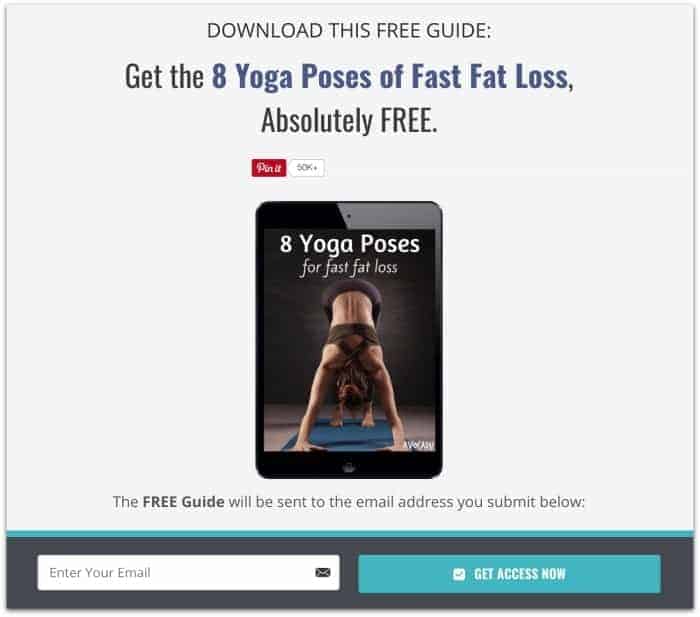
3. Affiliate (Affiliate Marketing)
An affiliate is a blogger that earns a commission or referral fee when they sell someone else’s products or services. It’s a really great way to start making money blogging because you can start earning without taking the time to create your own products and services.
Learn More: Affiliate Marketing for Bloggers: 6 Ways to Earn More
4. Alexa Ranking/Alexa Score
When someone asks what a blog’s Alexa ranking or score is, they are essentially asking how popular it is. It is based on the last 90 days or your site’s traffic, and the lower your score is, the better.
5. Alt Text
Alt text is also called an “alt description” or “alt tag,” and it refers to the words or phrases you can add to an image that tells your audience what the nature of your image is.
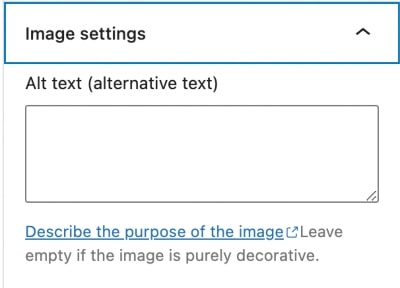
It’s critical you add alt text to images on your blog because it tells search engines what the content of the image is, which can help boost your SEO.
6. Anchor Text
When a visitor comes to your blog and clicks a hyperlink, this is the clickable text of the link. For example, if I’m talking about side hustles, I can link my article to that topic. The text “side hustles” that I specifically linked is called the anchor text.
This phrase is most relevant when it comes to SEO. Ideally, your anchor text contains related keywords to the article that you’re linking.
7. Atom or Atom Feed
The Atom feed was developed as an alternative to RSS feeds. It’s a machine-readable syndication format that is XML-based and allows users to subscribe to websites and blogs so they can easily see the latest updates as they become available.
8. Author or Contributor
The name of the person attributed with writing a blog post. When there are multiple contributors to a blog, listing the author is often beneficial so that a reader can find all posts by a single author if they choose to. It also gives proper credit for guest posting.
9. Automate
When you automate something, it means you’re using a machine, tool, or software to do it for you.
10. Avatar
A cartoon or graphical image or picture that represents you or another contributor on your blog.
11. Backlink
A backlink is any link on your website that links to another, external website – usually with a “follow” tag. We’ll explain do-follow links later on in our blogging terms.
Backlinks help improve your Google SEO score and help your content get found more in search.
You’ll often hear bloggers talking about “link-building strategies.” This just means strategies to get backlinks from other blogs.
12. Badbot or Spam Bot
Believe it or not, a lot of the web’s traffic is bots, and some bots are designed to crawl the web adding spam comments to blogs. In some cases, these bots also will collect data such as email addresses from the internet to send unsolicited emails and viruses.
13. Beta
When something is still in the testing stage, and not yet available for general use. A person who tests or reads material during this stage is referred to as a beta tester, beta reader, or beta user.
14. Black Hat SEO
This is considered an unethical practice of trying to rank higher in search results. Tactics used in Black Hat SEO include stuffing a post with keywords, using private link networks sometimes referred to as private blog networks (PBNs), and cloaking.
A common Black Hat SEO tactic is to fill a meta description or alt text with popular keywords that actually have nothing to do with the content in the post or images.
Blogs caught engaging in the practice of Black Hat SEO can be de-indexed and blacklisted from search results.
15. Blacklist
Getting blacklisted is when a blog is removed from search engine results. This can occur due to engaging in Black Hat SEO, the appearance of malware on your site, and other suspicious activity on your blog. It can be extremely difficult to remove a site from the blacklist once it’s there.
16. Blinking
Also known as blog hopping, blinking is when you bounce from blog to blog as a result of clicking links on a page. These links are often found on the sidebar of a blog.
17. Blog
A blog is the shortened word for web log or weblog. A blog can consist of a series of online journal entries or articles published by one person or several people. Some blogs only feature posts of text, whereas others may add media such as images, videos, audio or a combination of text and media as well.
Individuals can create blogs for a variety of different personal and professional purposes. Companies and organizations also create them to promote their brands.
Blog content can be both private or public. Private blog content often requires a special link or password to view the material.
Learn More: What is a Blog?
18. Bounce Rate
When a viewer leaves your blog, it’s called a bounce. The more visitors come to and bounce away from your blog, the higher your bounce rate is.
High bounce rates can negatively impact your SEO because it tells search engines that viewers don’t like or don’t want the content on your blog.
You can check your bounce rates in Google Analytics:

19. Call to Action (CTA)
A CTA is a prompt for your blog readers to take action. Something like “sign up for our newsletter,” or “click here to learn more,” is a call to action, because it asks your readers to do something.
You’ll usually find these at the bottom of posts or the end of YouTube videos.
20. CAPTCHA
This is a security feature that usually presents an image consisting of letters and numbers that then requires a user to type in those characters into a text box accurately. You’ve likely noticed it as the “I’m not a robot” box.

The purpose of a CAPTCHA is to prevent or minimize spam.
21. Category
A blogging category is a subsection of a blog. For example, let’s say you’re blogging about farming. Your categories might include things like supplies needed to grow crops, how-to instructions for tilling the land, and general advice on things like soil and fertilization.
Here is an example of a health blog’s categories:
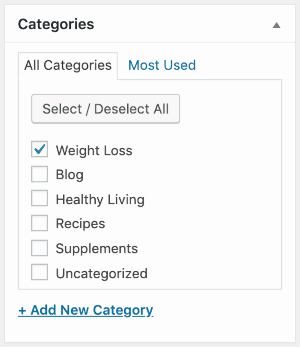
Some blogging platforms refer to categories as labels or tags. They each mean the same thing. And, when a reader clicks the label, tag, or category name on your blog, they are often redirected to a page that shows them all related posts for that subsection name.
22. Clickbait
This is one of the blogging terms that you likely already know or have at least been subject to in the past.
A clickbait headline is one that is exaggerated or even purposely misleading in order to get more clicks. It’s an unethical tactic used to lure readers to your blog.
Learn More: How to Write Better Headlines
23. Click-Through Rate (CTR)
Your click-through rate is the number of people that clicked a link on your blog, or that clicked through a link in an email. For example, if you send 100 emails with a link in it, and 10 people click through, your CTR is 10%.
24. Comment Moderation
Controlling and regulating comments on your blog. You can do this by using a CAPTCHA or by filtering comments for language and content. Content moderation can also mean holding comments in a queue for approval, which allows you to view them and approve or deny them to go live on your blog.
25. Content
The text, images, information, and other media found in your posts.
26. Content Management System (CMS)
A content management system is a software program that helps you manage and add content such as landing pages, posts, and blog pages on a website or blog more easily.
27. Content Marketing
Content marketing is the practice of creating content and marketing that content to your audience.
28. Content Syndication
Taking a piece of content, be it a snippet, link, thumbnail or even an entire article, and publishing it to another website. A common example of this is cross-posting an article to both Medium.com or Quora as well as your own blog.
29. Conversion Rate
Your conversion rate is the percentage of people who take the desired action when reading a post, email, or sales page. For example, if 100 people visit your sales page and of that 100, 10 people purchase your product, your conversion rate is 10%.
This is a metric you want to pay close attention to when you are trying to grow and scale your blog or website.
30. Copyright
The legal rights to physical and intellectual property. In most cases, the person who created the physical or intellectual property owns the copyright. However, if they sell the rights of the property, the purchaser then retains ownership of the copyright.
In blogging terms, this means that you own the copyrights to all content on your blog (assuming you own your blog).
31. Creative Commons
This is a public copyright license that allows for the free distribution of an otherwise “copyrighted” work. Commonly used on photo-sharing websites, a creative commons license generally allows other people to distribute, build upon, modify, or share intellectual or physical property.
32. CSS or Stylesheet
Short for Cascading Style Sheets, CSS is written in HTML and is commonly used to style web pages. CSS can be used to style page layouts, fonts, and colors among other things.
33. Curated Content
Content curation is the process of gathering content that has a focus on a themed topic of interest.
34. Direct Traffic
The term describes visitors who come to your site by typing your blog’s domain into their browser.
35. Directory
Just like it sounds, a blog directory is literally a directory of blogs. Depending on who put the directory together, the list of blogs can be sorted by niche, relevance, Alexa ranking, or a wide variety of other categories.
Bloggers often add their blog name and domain to blog directories as a means to generate traffic and backlinks to their sites.
36. Dofollow Link
A link on a website or blog that can be crawled by search engines on a blog. A do-follow link will help a blog’s search engine rankings.
When you’re building a link-building strategy for SEO, make sure that you are getting do-follow links back to your blog because no-follow links don’t provide any “link juice” (SEO benefit).
Learn More: Beginner’s Guide to SEO
37. Domain Authority
Based on a scale of 1 to 100 with 100 being the best and 1 being the worst, domain authority is measured on age, popularity, and traffic size. It is one of many factors used in determining your blog’s search engine ranking.
You usually need a good SEO tool to check your domain score or domain authority.
38. Domain Name
The string of numbers, letters, and sometimes hyphens, typed into a browser to bring you to a particular website. For example, our domain name is Createandgo.com.
39. Draft
A draft on your blog is simply an unpublished piece of content. Once you publish it, it becomes a published post that can be accessed by others.
40. Drip Campaign
A direct marketing technique used to acquire customers through lead generation and nurturing. It typically involves sending marketing messages to prospective customers over a period of time to walk them through a sales funnel with the hope of transitioning them from prospect to paying customers.
41. Editorial Calendar
A calendar designed to help you organize when you will publish content for your blog. It’s a great way to get an overview of the themes and topics you would like to post and avoid publishing the same messages over and over again. An editorial calendar can help with brainstorming new blogging ideas as well.
We use Asana to keep track of our editorial calendar and other blogging tasks. You can also see plenty of other free and paid options in our article on project management software.
42. Email Marketing
An email marketing campaign is a series of emails that you send that usually have a desired outcome: build trust with your audience, sell a product, etc.
Whether you consider yourself a marketer or not, this is one of those important blogging terms you need to get really comfortable with. Building an email list is a key part of becoming a successful blogger.
Our preferred email marketing platform: ConvertKit
43. Embed
Placing content from another website into your own post or page. For example, embedding a YouTube video or Instagram post into your content like this:
44. Engagement
Interacting with your blog readers on your website, via email, and on social media.
On most social and search platforms, the better the engagement you have on your content, the more likely it will be shared and found by others.
45. Evergreen Content
This is material posted to your blog that remains relevant all year long and even years into the future. The more evergreen your content is, the longer it will last without having to be updated.
Make sure to write evergreen content whenever possible to save yourself time updating content later on down the road.
46. Expert Interview or Expert Roundup
An expert interview or expert roundup typically consists of asking several experts the same question and posting all of their answers. An expert interview can also mean asking one expert several questions, and posting all of their responses to your inquiries.
47. Favicon

This is a small graphic, which can be your logo, representing your website that appears in an internet tab/address bar, and in bookmark/favorites lists.
48. Follow for Follow
Typically used on social media, it’s the act of following someone who follows you.
Follow for follow is generally considered to be a bad practice for gaining followers and it can lead to gaining an audience of people who aren’t actually interested or engaged with your content.
Found at the bottom of your blog, this is generally where you’ll place a copyright notice, links to contact pages, about pages, disclosures, privacy policies, terms of service, and more.
50. Forums
A blog forum is similar to a chat room in that it’s a place where visitors can come together for a discussion on one topic or theme.
51. Gallery
A gallery is a collection of multiple images attached to a post. It allows you to display several images with less space so your post can look clean, and professional.
52. Geotargeting
Delivering content based on a reader’s geographic location. This is most commonly used in advertising such as on Facebook Ads and Google Ads.
53. Graphic
An image that serves as a visual representation of your blog content.
54. Gravatar
When a user comments on a blog or posts an article to a blog, there is an image that shows up beside their name. That image is called their gravatar, and it represents the user.
55. Guest Post
When you write and publish a post to a blog owned by someone else. Guest posts can be great for building backlinks and generating new traffic.
Learn More: What is Guest Posting? + 10 Steps to Maximize Your Strategy
56. Heading Tags (i.e. H1, H2, H3, H4)
Heading tag text appears in different sizes on your blog. H1 is typically where the title of your post appears, and H2 is the subhead. H3, H4, and subsequent heading tags are used for introducing various subsections of your post.
They are great for structuring your page and helping readers browse content quickly. They should contain your keyword for maximum impact.
57. Header
This is the top portion of your blog that appears before your post links or pages. It typically consists of an image, a tagline, and a navigation menu.
58. Host or Hosting Provider
A company that literally hosts your blog on their web servers. All the data related to your blog (i.e. images, text, audio files, etc…) is hosted on these servers.
Our recommended hosting company is Bluehost. They’re very beginner-friendly and one of the most affordable plans you can start out with.
Learn More: Best Hosting Sites for Blogs
59. HTML
Short for Hypertext Markup Language, HTML is the language used to write web pages, and create effects that you see on them.
60. Hyperlink/Link
This is the clickable text that will usually bring the reader to another website, another part of the same page, a different page on your blog, or open a piece of media.
Each article that you write should have a healthy amount of internal links (linking to other posts or pages on your website) and external links (linking to other authority sites and resources).
This is good for SEO!
61. Inbound Link
An inbound link is found on someone else’s blog that points a reader to your blog. Also called a backlink. We covered this earlier in our list of blogging terms. Refer back to backlink.
62. Inbound Marketing
Attracting potential customers to your blog via content creation before they are ready to buy. It’s generally more cost-effective than direct/paid advertising and makes it easier to capture the attention of your prospects.
63. Index
The process of adding your website and its content to search results. You might hear the blogging term “no index,” which means to exclude a specific page or post from being indexed by Google. People tend to do this with private pages or other pages that they don’t want to be found in search.
64. Influencer
A person who can impact (or influence) the purchasing decisions of others. Influencers often have lifestyle blogs and spend a lot of time sharing content on social media.
65. Infographic
A diagram, chart, or another image that visually represents data or information. Infographics are also very shareable and are used as a tactic in building backlinks for SEO.
66. Internal Link
A link on your own blog that connects a reader to another page or post on your blog. All of the “Learn More” links in this article are internal links to our other, related blog posts.
Including internal links is a great way to keep the reader engaged and on your blog, thereby decreasing your bounce rate.
67. Keyword or Keyword Phrase
A keyword or keyword phrase is what someone types into a search engine, that they are seeking information on. When your blog’s content matches their search query, your website is more likely to come up in their search results.
68. Keyword Research
The practice of finding relevant and highly searched keywords people are searching for on search engines. These words are then used to improve a blog’s SEO rankings by creating content around popular and relevant keywords.
Learn More: Keyword Research Tools for Bloggers
69. Lead Magnet (Content Magnet or Opt-in)
An incentive you give a blog reader in exchange for their email address. It’s the freebie aka freemium content, you give someone as a thank-you for becoming a blog/email subscriber.
Learn More: How to Build an Email List
70. Link Baiting
A method of link building that encourages other content creators to link to your material.
71. Link Building
The act of getting content creators to link to your blog.
72. Long-Tail Keywords
These are the longer and more specific phrases, at least four words in length, people are searching for on search engines.
For example, “blogging terms” is a relatively short keyword. “Blogging terms to be successful” would be considered a medium or even long-tail keyword.
Shorter and simpler keywords often have the highest search volume but they are also the most competitive. Most bloggers building a solid SEO strategy go after medium and longer-tail keywords that are less competitive.
Learn More: Best SEO Tools for Blog Growth
73. Long-form Content
Content that is 750 words in length or longer. Good long-form content can boost SEO and lower bounce rates.
74. Media Kit
Bloggers usually build a media kit when they are accepting sponsored posts. It’s usually a page or document that contains numbers and data about your blog’s traffic, email subscribers, and more.
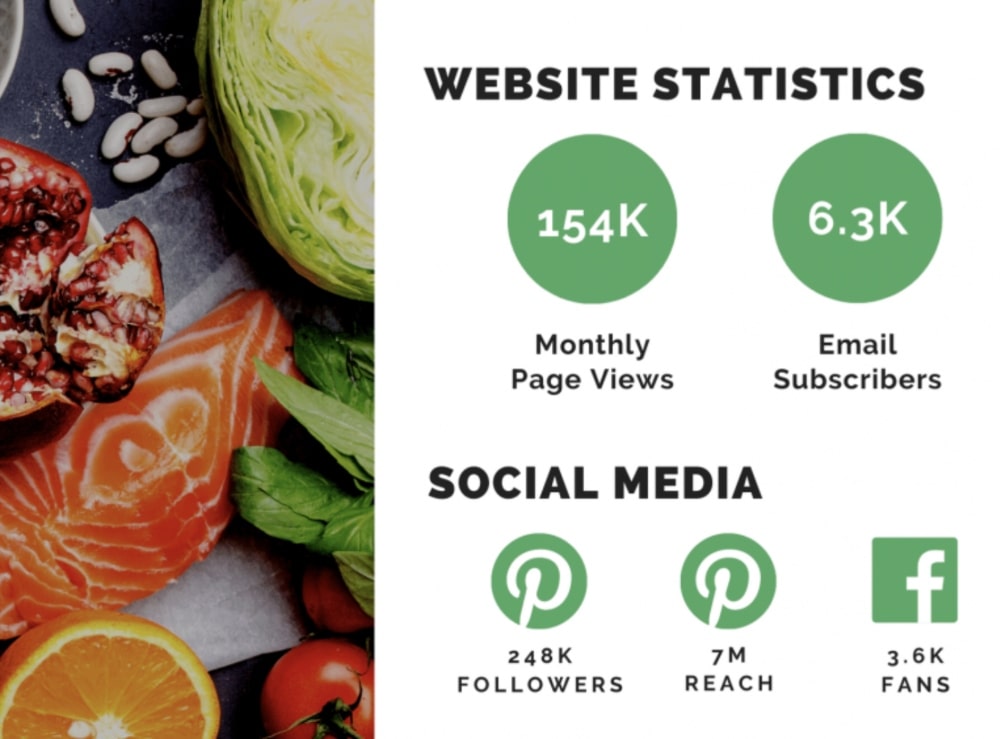
75. Meta Description
The description of what your post or page is about. It should be short, sweet, and to the point. Your meta description should also contain the keyword or phrase you are trying to rank for.
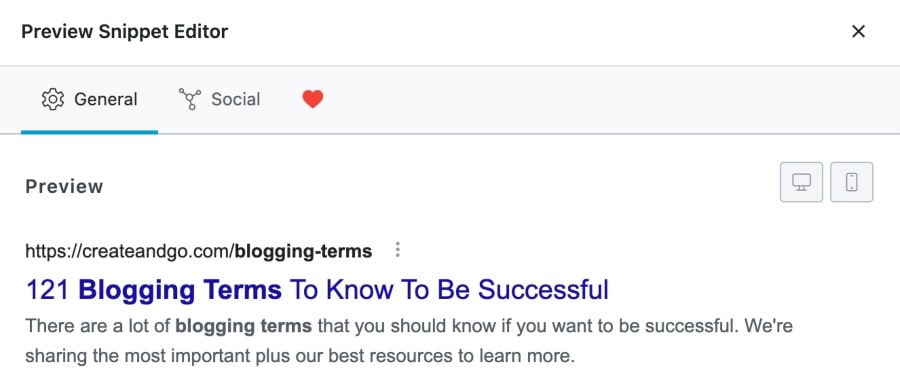
Every piece of content you write should have a good, descriptive meta description with your keyword to help boost your content rankings in Google SEO.
76. Monetization
Making money from your website. Common monetization techniques include:
- affiliate marketing
- selling products or services
- displaying ads,
- and writing sponsored posts.
Learn More: How to Make Money Blogging: Complete Guide
77. Niche
The topic of your blog. It’s important to choose the right blog niche for SEO purposes.
It’s also important to narrow this down so that you attract a targeted enough audience. For example, a “health” blog is too broad. A blog on “weight loss for women,” which is in the niche of health, is a lot narrowed down and will help you attract a specific group of people.
Learn More: 10 Popular and Profitable Blog Niches
78. Nofollow Link
A type of link that is prevented from being crawled by search engines. We discussed this earlier in our list of blogging terms when we talked about dofollow links.
For SEO purposes, you should make your affiliate or other sponsored links on your website “no follow” and “sponsored.”
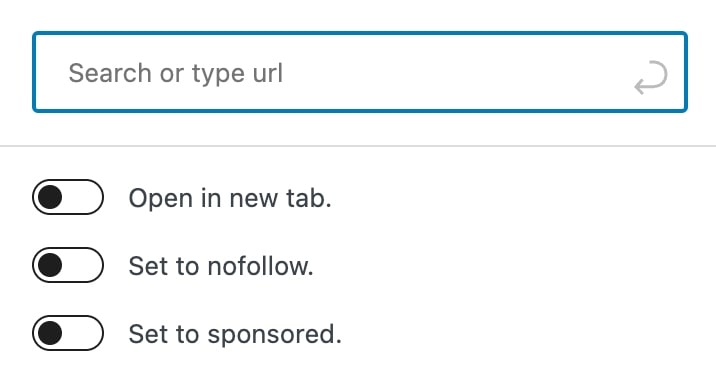
You can do this in WordPress when you are adding a hyperlink to a post.
79. Off-Page SEO
Things you do outside of your site, such as guest posting or getting in the media, to generate interest in your blog.
80. On-Page SEO
The things you do on your blog, such as using relevant keywords and phrases, to show up in search engine results.
The best way to get the basics of on-page SEO down is to download a free SEO plugin like RankMath. Plugins like RankMath and YoastSEO will provide checklists to help you make sure you’ve got the basics covered for every post that you write.
81. Organic Traffic
Organic traffic just means traffic that isn’t paid (like ads). It comes from search engines and social media. The best form of organic traffic for bloggers is Google SEO, which is why we’ve mentioned it so often in this list of blogging terms and why so many of the blogging terms relate back to SEO!
82. Outbound link
A link on your blog that points to an external blog or website. This is also called an external link.
It’s important to link back to other credible bloggers and companies in your posts because it shows Google and your audience that you’ve written a well-researched piece of content with supporting documentation.
83. Page Rank
The value assigned to your blog measures its importance or popularity on search engines.
You can find out this information with the help of SEO tools, like Ahrefs.
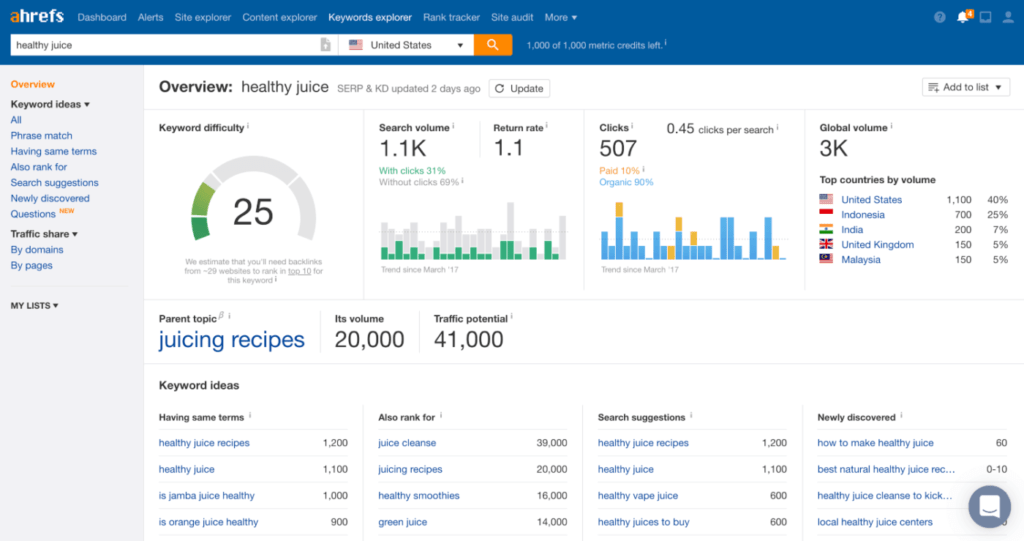
84. Page Views
The number of times a visitor comes to your blog. You can check this data in Google Analytics.
Note: There is a difference between page views and page sessions. A new page view is counted when someone visits your site. A new session is counted each time someone clicks on a different page or post on your website. This is why page sessions will always be higher than page views.
When meeting requirements for Mediavine and other ad networks, page views are what is measured most often.
85. Paid Search
Visitors come to your website by way of display ads or pay-per-click (PPC) ads. Think clicking on FaceBook or Instagram ads.
86. Pain Point
A pain point is just the problem that your article or another piece of content is addressing. It’s the problem that your audience wants to be solved.
If you can both highlight your readers’ pain point(s) as well as solve their problem(s), they will be more likely to take an action – read more content, sign up for an email list, buy a product, etc.
87. Permalink
The URL or address of a particular post within a blog. For example, the URL for this post is https://createandgo.com/blogging-terms/
Once a URL has been set and the post has been published, it’s not wise to change the URL unless you set up a redirect. We’ll cover redirects in just a moment later on in this list of blogging terms (see Rs).
88. Pingback
Also called a trackback, a pingback is what happens when a person posts something to their blog and references another person’s blog with a link to the post they are talking about.
You will often get notified of these in your comments section if you have the setting turned on.
89. Plagiarism
This is one of those blogging terms that isn’t blogging-specific. You probably first learned this term in grammar school or college.
Plagiarising is when you take copy someone else’s ideas and/or content and publish it as your own. It’s also against copyright laws and you can have your content removed if the owner files a DMCA against you.
Please don’t do this. Bad blogger.
90. Plugin
A plugin is typically defined as a piece of software used on WordPress that adds additional functions to a blog. For example, RankMath is our recommended SEO plugin for bloggers:
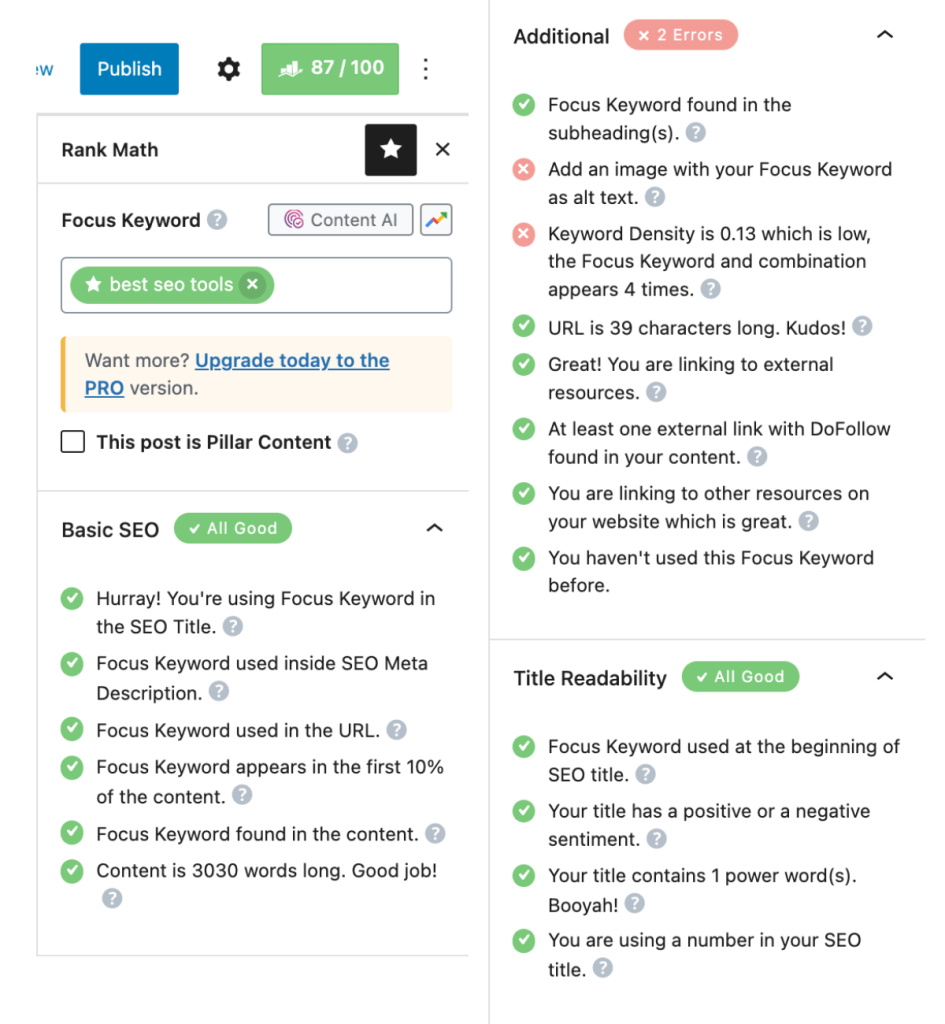
Learn More: Recommended WordPress Plugins for Bloggers
91. Podcasting
Preparing and distributing audio files for download to multimedia players. A lot of bloggers start a podcast as an additional traffic source for their blog.
Learn More: Best Podcast Hosting Sites
92. Reciprocal Link
Exchanging links on a blogroll, roundup, or post with another blogger, or several bloggers. This is also called a “link exchange” or “link swapping.”
93. Redirect
Sending a blog reader to a different location than the one they clicked or typed into an address bar.
You have to set up redirects if you change your domain or delete old posts so that those old URLs don’t cause 404 errors, which you will get penalized in Google rankings for.
You can identify these pages via Google Search Console:
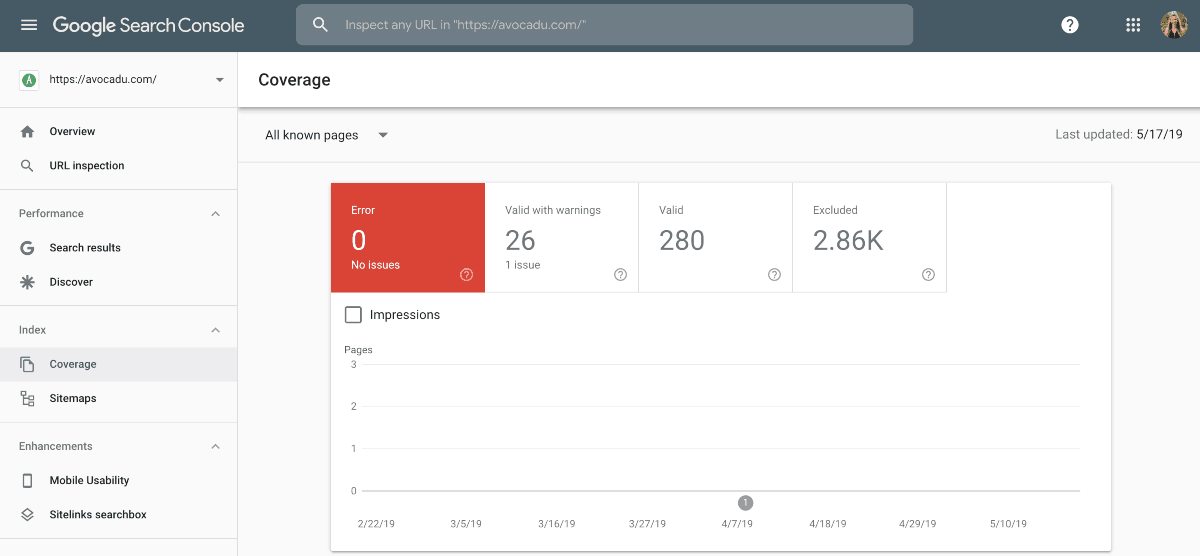
94. Referral Traffic
Traffic to your blog as a result of someone clicking a link on another website. For example, if another blog links back to your blog — any traffic that you receive from that link would be considered referral traffic.
95. Robots
Filed as robots.txt, robots provide information about a blog or page to help a search engine in categorizing it correctly.
96. Return on Investment (ROI)
Another one of those blogging terms that aren’t blogging-specific. You probably remember this one from your first finance class in college, but it comes up for bloggers when they run paid ads.
Your ROI is the measurement of whether or not what you are putting in is worth what you are getting out of an action or financial investment. A positive ROI means that you’re making more than you invested. A negative ROI means that you’re in a deficit.
For example, if you run an ad for $100 and the traffic from that ad results in 1 sale for $150, you have a positive ROI of 1.5 (and you should keep running your ad!).
97. RSS
It has been called both Really Simple Syndication and Rich Site Summary. Either way, an RSS feed is a simple way to allow readers to subscribe to your blog content.
98. Search Engine Optimization (SEO)
With how often I mentioned SEO in this blogging terms list, I really should have made this term first. SEO is the act of affecting your blog’s online visibility via a search engine’s unpaid results.
99. Self-hosted Blog
When a blogger owns the domain and the website. If you try to set up a free blog, you won’t own your own domain name. Rather than createandgo.com, it would look like “createandgo.blogspot.com” or “createandgo.wordpress.com.”
If you want to run a successful blog, you need a self-hosted blog and to own your own domain name.
Learn More: Self-Hosted vs. Free Blogs
100. Semantic Search
I’m just going to go ahead and leave this definition from Moz here:
“Through concept matching, synonyms, and natural language algorithms, semantic search provides more interactive search results through transforming structured and unstructured data into an intuitive and responsive database. A semantic search brings about an enhanced understanding of searcher intent, the ability to extract answers, and delivers more personalized results.”
101. SERP
Yet another one of the SEO blogging terms: SERP stands for Search Engine Results Page
You’ll come across this term mostly in your keyword research efforts.
102. Sidebar
The narrow and vertical column on the side of a blog that bloggers add widgets, popular links, and other information to. Not all blogs have a sidebar and it isn’t required, although it’s a great way to include other, helpful information and links.
103. Sitemap
A list of pages on your website that is used in ranking your website on search engines. This is something that sometimes needs to be submitted, especially if you make changes on your site.
104. Slug
The short, abbreviated title in a post’s URL (or permalink). For example, this post’s slug is /blogging-terms/
105. Social Proof (Social Influence)
Social proof represents the credibilty that you have from your social accounts. For example, if you have a large following on Instagram, a screenshot of your followers will serve as social proof on your blog. It’s like “street cred” for social influencers.
106. Social Search
Using a social media platform to find user-generated content. For example, Pinterest, YouTube, and Instagram all have search features.
107. Spam
Anyone who uses email knows that spam is an unsolicited and often unwanted message that is sent to them. In the blogging world, spam is typically referring to undesired comments that spammers post on a post’s comment section.
However, it can also be used to describe overly commercialized blog content.
When a blogger has too many sponsored posts or inundates their blog with advertisements, that blog is sometimes referred to as a spam blog or spammy blog.
108. Sponsored Post
A sponsored post is a post that another blogger writes and pays to publish on your blog. This is usually achieved when you have a larger audience and your access to your audience is worth paying for.
It’s how a lot of bloggers earn their income and it’s somewhat similar to sponsored posts on Instagram (when a company pays for an influencer to post about their product).
Learn More: Making Sense of Sponsored Posts
109. Stop Words
Stop words are common words in the slug, such as the, is, at, which, and on, that can hurt your SEO.
For example, the slug /blogging-terms/ is better than /blogging-terms-to-know-to-be-successful/ — those extra words are stop words and are unncessary in your permalinks.
110. Tagline
The short phrase that explains what your blog is about. You usually add this in your WordPress customizer or theme settings.
111. Target Reader (Target Audience)
Your ideal audience, and the people you want reading your blog. The people who have the problems you can solve.
It’s important to identify your target audience as early as possible so that you know who you’re writing to and create your content specifically for that person.
You can get some demographic information on your current traffic via Google Analytics:
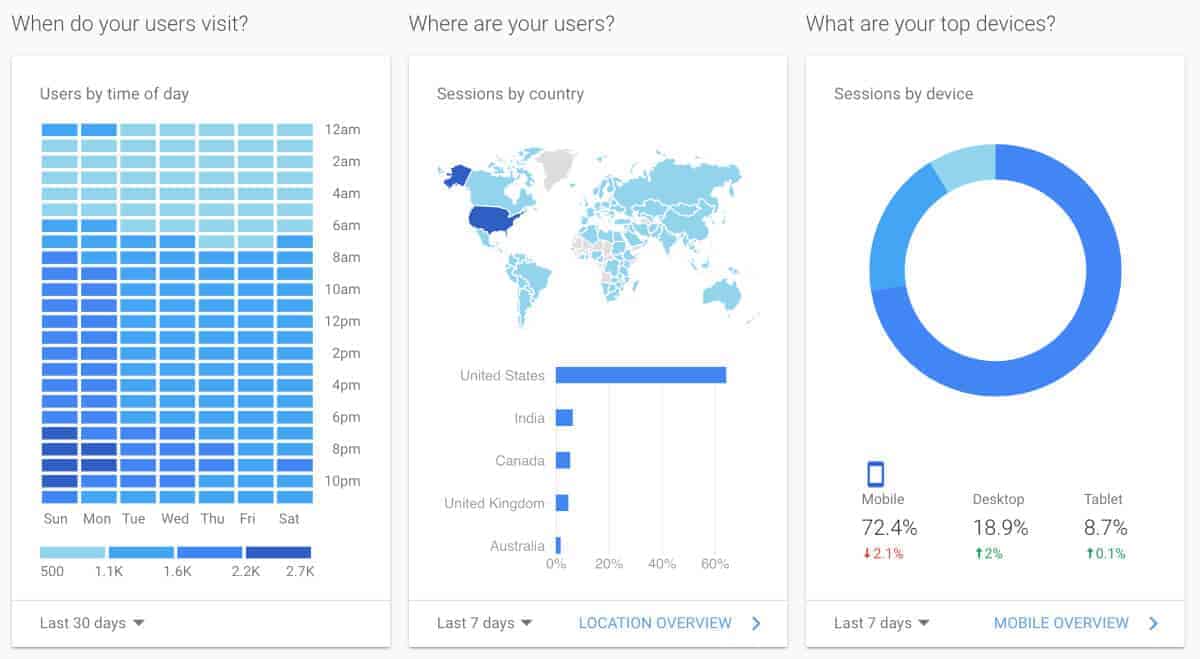
112. Theme
This refers to your blog’s front-end style. It can mean the colors and fonts used on your website, the way your links appear, your page layouts, and where your widgets appear.
It’s important to have a customizable, beginner-friendly, and quick theme for your blog if you want to be successful.
Learn More: Best WordPress Themes for Blogs
113. Thin Content
A blog that doesn’t contain any valuable information. Its main purpose is to generate traffic but offers nothing new to readers.
114. Unique Visitor
A new visitor, that has never been to your blog before. You’ll often see “views” and “unique views” in your traffic stats (like on Google Analytics).
115. User Intent
The end result that someone searching online is trying to get to. In other words, the solution someone with a problem is looking for.
The user intent for your content can be to educate people, to get them to sign up for an email list, make a sale, etc.
116. VA (Virtual Assistant)
A virtual assistant (or VA) usually performs common admin tasks like email management, customer service, and social media management. The job description can vary quite greatly based on the needs of the blog owner or person hiring.
117. Vlog
A vlog is a video blog.
118. Web Server
Contains software for hosting or serving websites written in HTML.
119. Webinar
A webinar is an online seminar or class. Bloggers often use webinars to educate their audience about a topic and then pitch a product at the end of the webinar.
Learn More: Best Webinar Software
120. White Hat SEO
Ethical strategies for boosting search engine rankings such as guest posting, and expert roundups.
121. Widget
A widget is a small block, typically in the sidebar of a blog, that is there to perform a specific function. For example, you can add an email newsletter signup widget, a calendar, a search box, or even a popular posts widget.
That’s it for our list of blogging terms!
Did We Miss Any Important Blogging Terms?
If we missed any blogging terms that you think should be on this list, let us know in the comments below! We hope this helps with your blogging journey!
Sources:
- https://www.mostlyblogging.com/better-blogger-blogging-terms/
- https://mollermarketing.com/2010/10/43-essential-blogging-terms-to-know-if-youre-a-serious-blog-contender/
- https://www.alanizmarketing.com/blog/blog-writing-44-common-blogging-terms/
- https://deborahtenbrink.com/blogging/common-blogging-terms-every-blogger-should-know/